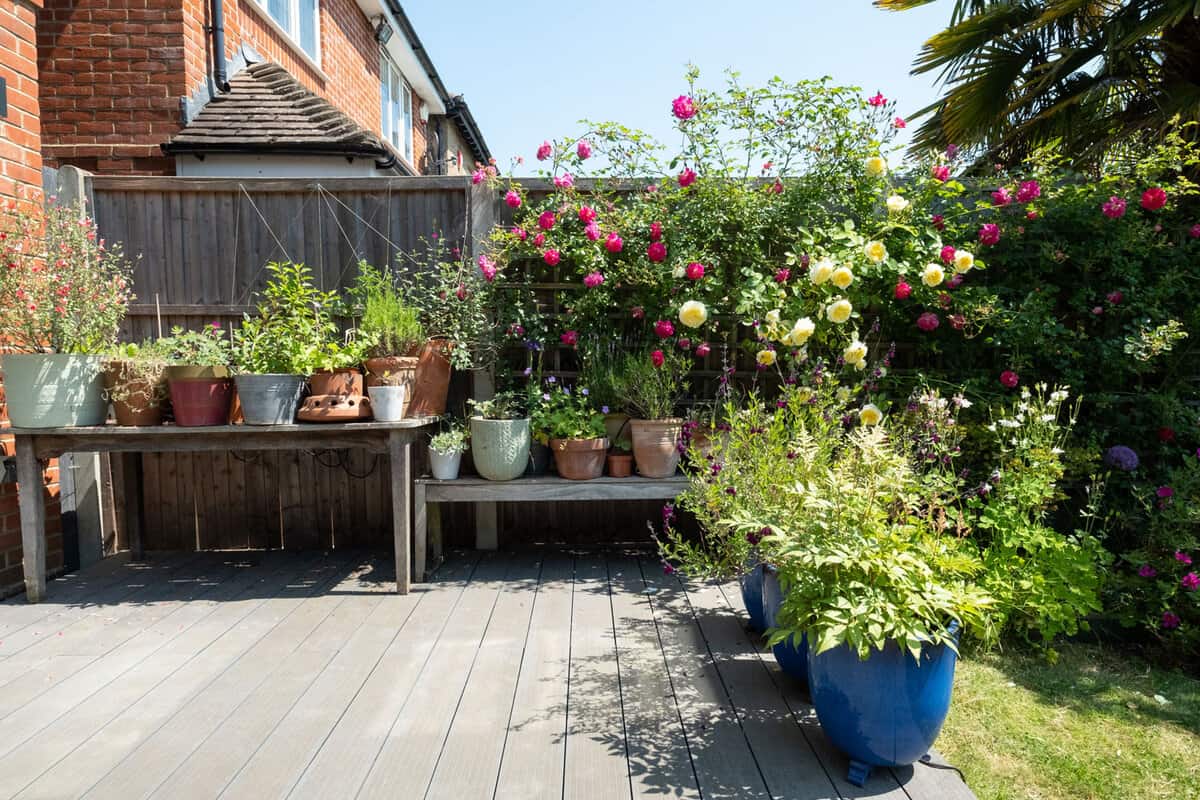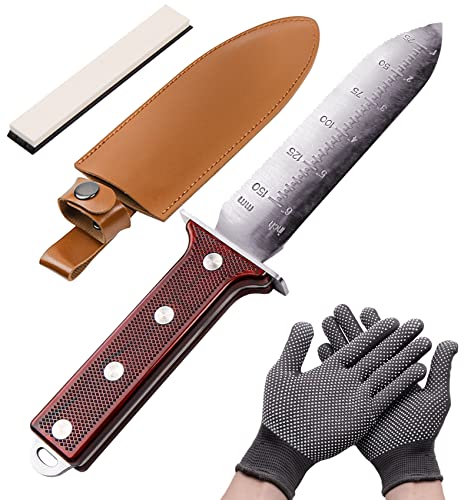If your houseplants look crowded or overgrown, it might be time to consider dividing and transplanting them.
So, what is transplanting? At its heart, transplanting is moving a plant from one location or growing medium to another. It's like giving your plants a new home tailored to their growth needs.
This process can breathe new life into your plants, offering them optimal conditions, saving them from diseases or pests, and even reshaping the look of your garden.

Not only does this help to keep your plants healthy and thriving, but it can also be a fun way to propagate and share your favorite plants with friends and family.
With a touch of diligence and attention, you can masterfully divide and transplant them, ensuring they thrive and flourish.
Ready to discover the steps? Please scroll below and give your green companions the care they deserve!
Identifying Overgrown Plants
Overgrown plants can become root-bound, meaning their roots have filled up the container and have nowhere else to go. This can lead to stunted growth, yellowing leaves, and even plant death.
So, how do you identify if your plant is overgrown? Here are a few signs to look out for:
1. Roots emerging from drainage holes
If you notice roots emerging from the drainage holes at the bottom of the container, it is a clear sign that the plant has outgrown its current pot. The roots have grown so much that they are searching for more space.
2. Slow growth
If your plant is not growing as fast as it used to, it may be because it has outgrown its container. The roots compete for space and nutrients, leading to slower growth.
3. Wilting or yellowing leaves
Overgrown plants may have difficulty absorbing water and nutrients from the soil, leading to wilting or yellowing leaves. If you notice this happening to your plant, it may be time to transplant it to a larger container.
4. Rootbound
Removing the plant from its container and noticing its roots have grown in a circular pattern signifies that it has become root-bound. This means that the roots have grown to fill the container and have nowhere else to go.
It would be best to spot these signs early to prevent your plant from becoming too stressed and potentially dying.
Transplanting your overgrown plant into a larger container will give it the space it needs to thrive and grow to its full potential.
When to Divide and Transplant
Knowing when to divide and transplant your overgrown plants is crucial for their survival and success in their new location.
The best time to divide and transplant perennials is during their dormant season, typically in the fall or early spring. This is when the plants are not actively growing and are less likely to experience transplant shock.
It is also essential to consider the weather conditions when dividing and transplanting. Choose an excellent, overcast day to minimize stress on the plants.
If the area to be worked on is dry, water the soil a day in advance. Ideally, divide plants when there are a couple of days of showers in the forecast to provide enough moisture for the new transplants.
Check out this related post: When To Transplant Ferns [And How To]
Choosing the Right Tools
When dividing and transplanting overgrown plants, having the right tools is essential. In this section, we'll review the hand and power tools you'll need to complete the job.
Hand Tools
Hand tools are perfect for smaller plants or plants with shallow root systems. Here are some essential hand tools you'll need:
| Tool | Description |
|---|---|
| Garden gloves | Protect your hands from thorns, sharp edges, and dirt |
| Hand pruners | Used for snipping off dead or damaged leaves and stems |
| Trowel | Used for digging small holes and scooping soil |
| Garden fork | Used for loosening soil and breaking up clumps |
| Soil knife | Used for cutting roots and dividing plants |
Power Tools
Power tools are great for larger plants or plants with deep root systems. Here are some essential power tools you'll need:
| Tool | Description |
|---|---|
| Chainsaw | Used for cutting thick branches and stems |
| Hedge trimmer | Used for trimming hedges and shrubs |
| Lawn mower | Used for cutting grass and weeds |
| Rototiller | Used for breaking up soil and preparing planting beds |
| Power drill | Used for drilling holes in containers or wooden planters |
Always wear protective gear when using power tools and carefully read the manufacturer's instructions.
Click here to buy this on Amazon.
Click here to buy this on Amazon.
Click here to buy this on Amazon.
Steps to Divide Overgrown Plants
If your plants are overgrown, it's time to divide them. Dividing overgrown plants can help them thrive and grow better. Here are the steps to divide overgrown plants.
Preparing the Plant
Before dividing your overgrown plant, you need to prepare it. First, thoroughly water the plant a day or two before you divide it. This will help the plant to be more resilient during the division process.
Next, prepare the soil where you'll be transplanting the divided plant. Ensure it's well-draining and has enough nutrients to support the plant's growth.
Making the Cut
To divide the plant, use a sharp, clean knife or pruning shears to cut through the plant's root ball. Make sure to cut through the roots cleanly and avoid tearing them.
If the plant is too large to handle, you can use a garden fork to loosen the soil around the plant and then gently pull the plant apart into smaller sections.
Separating the Plant
Once you've cut, gently separate the plant into smaller sections. Each section should have a healthy root system and at least one stem or branch.
After separating the plant, plant each section in the prepared soil. Make sure to water the newly transplanted sections thoroughly.
Related Post: How To Remove Evergreen Bushes [Quickly & Easily]
Transplanting the Divided Plants
After dividing your overgrown plants, it's time to transplant them to their new location. Follow these steps to ensure your plants thrive in their new home.
Preparing the New Location
Before planting your divided plants, preparing the soil in their new location is important. Here are some tips to ensure your plants have the best chance of success:
- Choose a location with the appropriate sunlight and soil conditions for your specific plant. Consult the plant's care instructions for guidance.
- Dig a hole twice the size of the plant's root ball.
- Mix in compost or other organic matter to enrich the soil.
- Water the soil thoroughly before planting.
Planting Process
Now that your soil is prepared, it's time to plant your divided plants. Follow these steps for a successful transplant:
- Place the divided plant into the hole, ensuring the top of the root ball is level with the soil surface.
- Backfill the hole with soil, gently tamping it down as you go.
- Water the plant thoroughly, making sure the soil is evenly moist.
Aftercare and Maintenance
Here are some tips to keep your plants thriving:
- Water your plants regularly, making sure the soil stays evenly moist.
- Apply fertilizer according to the plant's care instructions.
- Mulch around the base of the plant to help retain moisture and suppress weeds.
- Monitor your plants for signs of stress or disease, and act accordingly.
Common Mistakes and How to Avoid Them
Dividing and transplanting overgrown plants can be daunting, especially if you're new to gardening. Here are some common mistakes you might make and how to avoid them:
Mistake #1: Choosing the Wrong Time to Divide or Transplant
Dividing or transplanting your plants at the wrong time can cause them to shock and even die. Avoid doing it during the hot summer when the plants are actively growing and blooming.
Mistake #2: Not Preparing the Soil
Before transplanting or dividing your plants, preparing the soil is essential. Make sure the soil is well-drained and has plenty of organic matter. Mix in some compost or aged manure to improve the soil's fertility.
Mistake #3: Dividing or Transplanting Too Much
It's important not to divide or transplant too much of your plant at once. This can cause the plant to go into shock and even die.
Only divide or transplant about one-third of the plant at a time. This will give the plant time to recover and grow new roots.
Mistake #4: Not Watering Enough
After you've divided or transplanted your plant, it's essential to water it well. Make sure the soil is moist but not soggy. Keep the soil moist for the first few weeks after transplanting to help the plant establish new roots.
Mistake #5: Not Mulching
Mulching is essential after transplanting to help retain moisture and regulate soil temperature.
Use a layer of organic mulch, such as shredded leaves or bark, around the base of the plant. Ensure the mulch is not touching the plant's stem, which can cause rot.
Final Thoughts
Dividing and transplanting overgrown plants can be a great way to rejuvenate and keep them healthy.
It can be an art form, and it may take some trial and error to figure out what works best for your plants.
Don't be afraid to experiment with different techniques and strategies until you find what works best!
Good luck!



